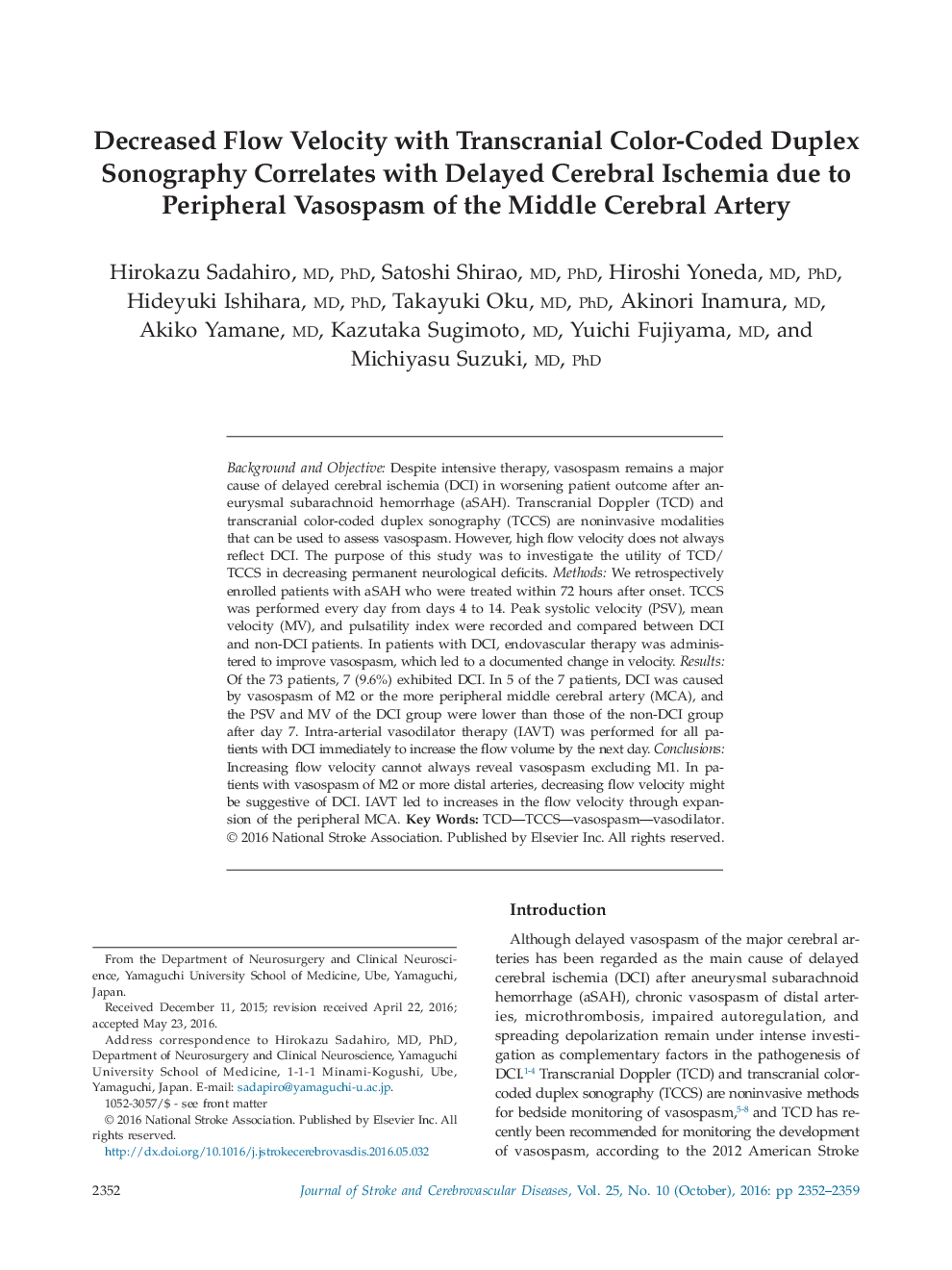| Article ID | Journal | Published Year | Pages | File Type |
|---|---|---|---|---|
| 2702105 | Journal of Stroke and Cerebrovascular Diseases | 2016 | 8 Pages |
Background and ObjectiveDespite intensive therapy, vasospasm remains a major cause of delayed cerebral ischemia (DCI) in worsening patient outcome after aneurysmal subarachnoid hemorrhage (aSAH). Transcranial Doppler (TCD) and transcranial color-coded duplex sonography (TCCS) are noninvasive modalities that can be used to assess vasospasm. However, high flow velocity does not always reflect DCI. The purpose of this study was to investigate the utility of TCD/TCCS in decreasing permanent neurological deficits.MethodsWe retrospectively enrolled patients with aSAH who were treated within 72 hours after onset. TCCS was performed every day from days 4 to 14. Peak systolic velocity (PSV), mean velocity (MV), and pulsatility index were recorded and compared between DCI and non-DCI patients. In patients with DCI, endovascular therapy was administered to improve vasospasm, which led to a documented change in velocity.ResultsOf the 73 patients, 7 (9.6%) exhibited DCI. In 5 of the 7 patients, DCI was caused by vasospasm of M2 or the more peripheral middle cerebral artery (MCA), and the PSV and MV of the DCI group were lower than those of the non-DCI group after day 7. Intra-arterial vasodilator therapy (IAVT) was performed for all patients with DCI immediately to increase the flow volume by the next day.ConclusionsIncreasing flow velocity cannot always reveal vasospasm excluding M1. In patients with vasospasm of M2 or more distal arteries, decreasing flow velocity might be suggestive of DCI. IAVT led to increases in the flow velocity through expansion of the peripheral MCA.
